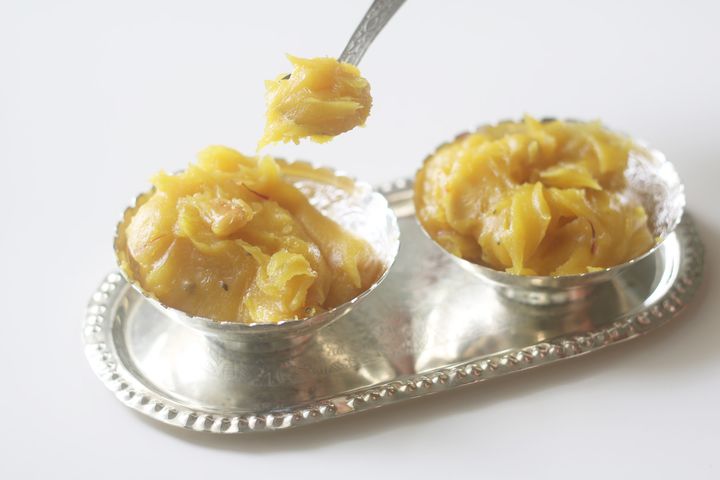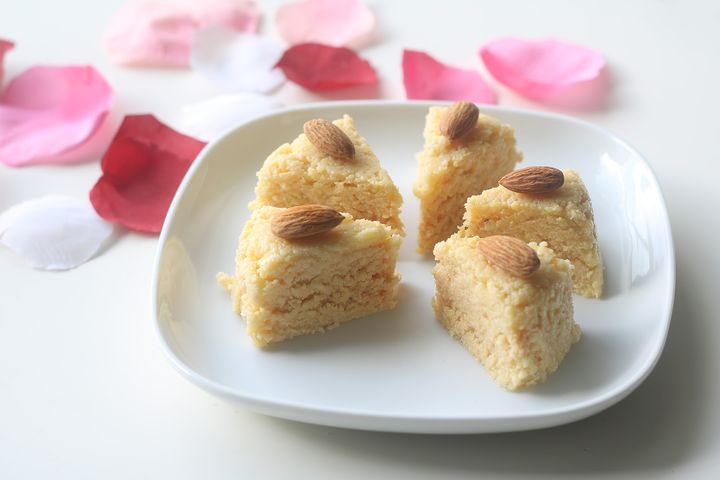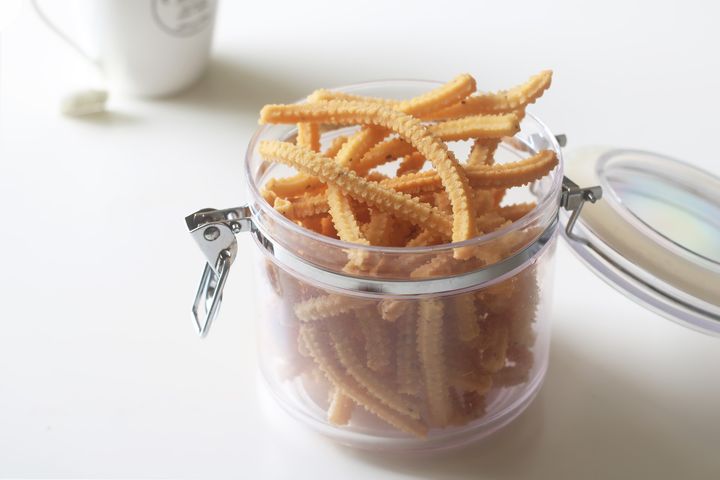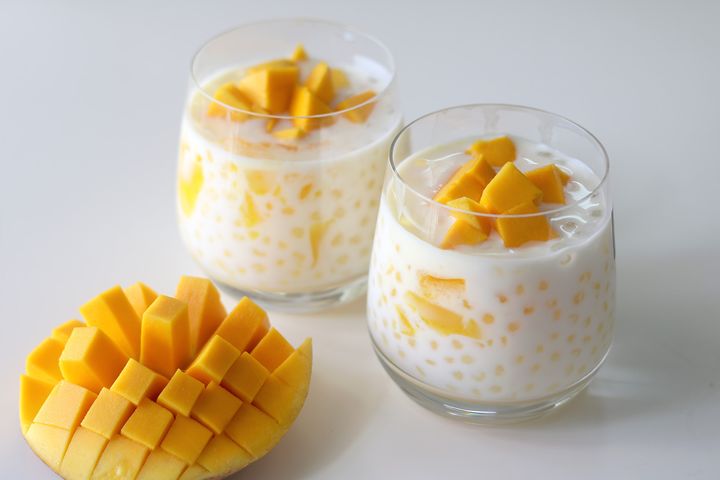Semiya Payasam Recipe
Javvarisi Semiya Payasam is a delicious and easy-to-make dessert that is sure to please your taste buds.
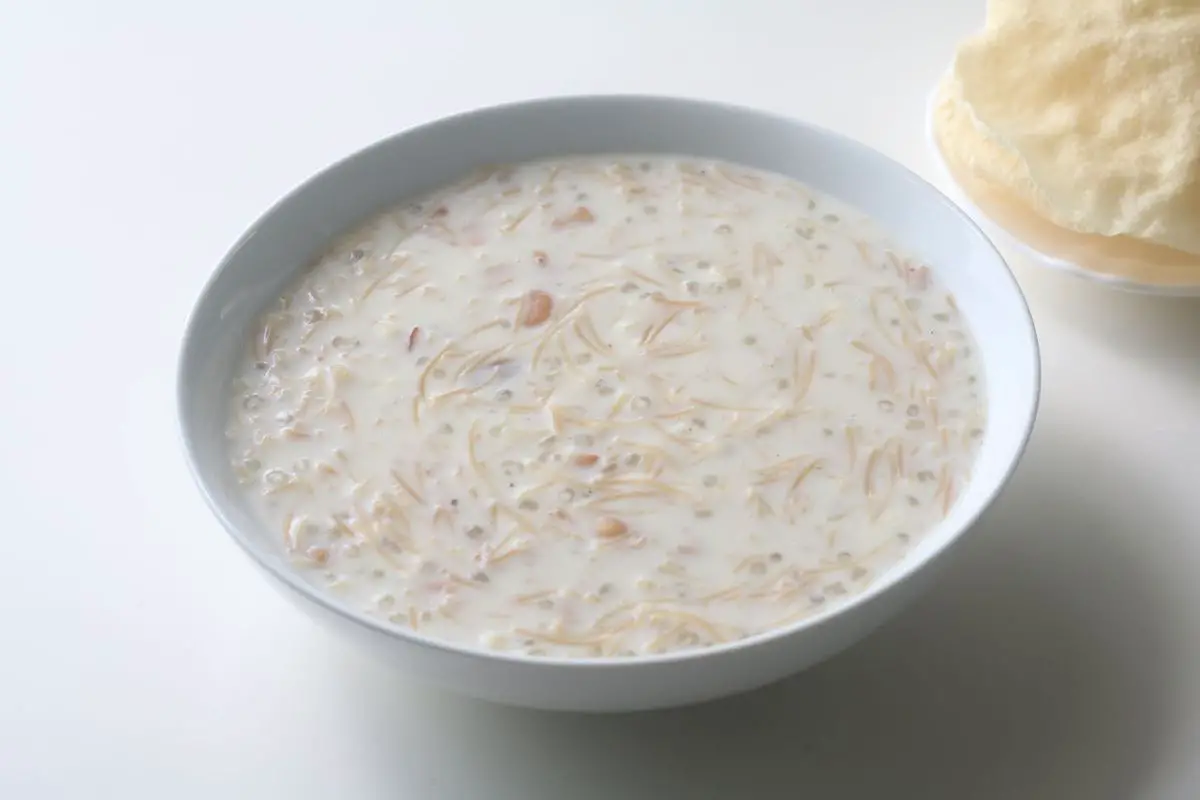
Welcome to the wonderful world of Indian desserts! Today, we're going to take you through a step-by-step guide on how to make a delicious and traditional Indian sweet treat - semiya payasam. This creamy and fragrant dessert is a popular choice for festivals, special occasions, or simply as a comforting after-dinner treat. Follow this simple recipe to create a dessert that will impress your family and friends with its unique flavors and textures. Let's get started!
Personally, I love to crush some Appalam and sprinkle it on top of this payasam. The combination of flavors is truly divine. In my home, we make Javvarisi Semiya Payasam during all festivals and family get-togethers. This has been my favorite dessert since childhood, and I’m sure it will become one of yours too!
So, why wait? Go ahead and try this delectable dessert today! Whether you’re hosting a family gathering or simply looking for a sweet treat, Javvarisi Semiya Payasam is sure to satisfy your cravings.
What Is Semiya Payasam Recipe?
- Semiya payasam, also known as vermicelli kheer, is a traditional Indian sweet pudding made with vermicelli, sago, milk, and a delightful combination of Indian spices and seasoning. This sweet dish is a popular dessert served during festivals and special occasions in India.
- The succulent vermicelli and sago are cooked in milk and flavored with cardamom, nuts, and raisins, creating a rich and creamy texture with a hint of sweetness. The unique combination of ingredients and Indian spices make semiya payasam a delightful and comforting dessert for any occasion.
Why You'll Love Semiya Payasam Recipe?
- Rich and Creamy Texture: The semiya payasam has a rich and creamy texture, making it a delightful dessert that melts in your mouth. The combination of vermicelli, sago, and milk results in a smooth and luxurious consistency that is simply irresistible.
- Healthy Ingredients: This traditional Indian dessert is not only delicious but also offers some health benefits. Sago is a good source of energy, and vermicelli provides essential carbohydrates. The addition of cashews and raisins adds a dose of healthy fats and antioxidants to the dish.
- Easy on the Stomach: The gentle and soothing textures of vermicelli and sago make this payasam easy to digest. It is often recommended for those recovering from illness or as a comforting food for kids and elderly individuals.
- Balanced Flavor Profile: The sweet aroma of cardamom, the richness of the milk, and the crunch of the cashews and raisins create a perfectly balanced flavor profile. The addition of sugar adds just the right amount of sweetness, making it a crowd-pleasing dessert for all age groups.
- Quick and Simple Preparation: This recipe is quick and simple to prepare, making it a great option for those last-minute sweet cravings or when you have guests over. With just a few basic ingredients, you can create a delightful dessert in no time.
- A Versatile Dessert: Semiya payasam can be served hot or cold, making it a versatile dessert for any occasion. Whether it's a festive celebration or a casual family dinner, this dessert fits the bill perfectly. Plus, it pairs well with crispy appalam, adding an interesting textural contrast to the dish.
Ingredients for Semiya Payasam Recipe
- Vermicelli: Thin noodles made from wheat, these add a pleasant texture to the payasam and absorb the flavors of the milk and ghee.
- Javvarisi / Sago: These small, round pearls add a chewy texture to the payasam and provide a subtle sweetness.
- Milk: The base of the payasam, milk gives a creamy and rich taste to the dish.
- White Sugar: Adds sweetness to the payasam and balances out the flavors.
- Ghee: Used for frying the cashews and raisins, ghee adds a nutty and buttery flavor to the payasam.
- Cashews and Raisins: These are added for garnish and add a crunchy texture and bursts of sweetness to the dish.
- Cardamom Powder: Provides a fragrant and distinctive taste to the payasam.
- Salt: Enhances the overall flavors and balances the sweetness of the dessert.

How To Make Semiya Payasam Recipe?
To make a delicious semiya payasam, follow these simple steps:
- Heat a pan with 2 tsp of ghee over low heat and fry the chopped cashews until browned. Then, add the raisins and stir fry until they puff.
- Add the vermicelli and fry until golden brown, then remove from heat.
- In the same pan, add the remaining 1 tsp of ghee and then stir fry the sago until puffed. Pour 1&1/2 cups of water and a pinch of salt, mix well and cook until 60-70%.
- Add milk and cook until fully cooked (5-6 mins).
- Then add the roasted vermicelli with cashews and raisins and cook until fully cooked (4-5 mins).
- Add sugar and cardamom powder, mix well and cook for one more minute.
- Switch off the heat and serve with appalam.
Each step is crucial to achieving the perfect texture and flavor of the semiya payasam. By following these instructions carefully, you can create a delectable Indian dessert to enjoy with your loved ones.
Serving Suggestions
- Pair with Traditional Indian Snacks: Semiya payasam goes well with traditional Indian snacks such as murukku, mixture, or vada for a complete meal experience.
- Serve with Appalam: For an authentic South Indian touch, serve the semiya payasam with crispy appalam on the side.
- Enjoy with a Cup of Chai: The sweet and creamy flavors of the semiya payasam perfectly complement a hot cup of chai, making it a delightful combination for tea time.
Tips for Semiya Payasam Recipe
- Preparation Duration: The preparation time for semiya payasam is relatively short, taking around 5 minutes to toast the vermicelli and sago, and another 10-15 minutes to cook everything together. It's a quick and easy dessert to make for special occasions or even as a sweet treat at home.
- Cooking Techniques: When toasting the vermicelli, make sure to do it over low heat to prevent it from burning. Stir occasionally to ensure even browning. When cooking the sago, make sure to cook it until it's about 60-70% done before adding the milk. This will ensure that the sago is fully cooked by the end.
- Garnishing for Presentation: To give your semiya payasam a beautiful presentation, consider garnishing it with a few extra cashews and raisins on top before serving. It adds a nice touch and makes the dessert even more appealing.
- Sweetness Level: Depending on your preference, you can adjust the amount of sugar used in the recipe. Start with the recommended amount and then add more if needed. Remember, it's easier to add more sugar later, so start with a smaller amount and gradually increase to taste.
- Serving Suggestions: Semiya payasam tastes delicious on its own, but you can also serve it with appalam or any other crispy snacks to add some texture contrast to the dessert. This can elevate the overall dining experience and make it even more enjoyable.
- Storage Tips: If you have any leftovers, you can store the semiya payasam in an airtight container in the refrigerator. When reheating, add a little milk to adjust the consistency and heat it gently on the stovetop or in the microwave. Enjoy!
Variations for Semiya Payasam Recipe
- Coconut Milk: Instead of using regular milk, you can experiment with using coconut milk for a creamy and tropical twist to the traditional semiya payasam recipe.
- Nuts and Dry Fruits: Feel free to add your choice of nuts and dry fruits such as almonds, pistachios, or even dried cranberries for a crunchy and flavorful addition to the payasam.
- Flavored Syrups: For a unique flavor, try adding flavored syrups such as rose water, saffron, or even a hint of vanilla for an aromatic and fragrant taste to the dish.
- Dairy-Free Options: If you prefer a dairy-free version, you can use almond milk, cashew milk, or any other non-dairy milk alternatives to make the semiya payasam suitable for those with dietary restrictions.
- Sweeteners: Instead of white sugar, you can use jaggery, honey, or even maple syrup for a different sweetness and depth of flavor in the payasam.
- Spices: Experiment with adding different spices such as cinnamon, nutmeg, or even a hint of ginger for a warm and comforting flavor profile in the semiya payasam.
How to Store Semiya Payasam
- Storing ingredients: Store vermicelli and sago in a cool, dry place to prevent moisture from affecting their texture and taste. Keep them in airtight containers for longer shelf life.
- Preserving nuts and raisins: To keep cashews and raisins fresh, store them in airtight containers in the refrigerator. This will prevent them from getting rancid and maintain their flavor.
- Maintaining milk freshness: Ensure to refrigerate the milk in a tightly sealed container to maintain its freshness. Always check the expiry date and use it within the given time.
- Properly sealing spices: Keep the cardamom powder in an airtight container away from direct sunlight and moisture. This will preserve its aroma and flavor for a longer period.
- Protecting ghee from spoilage: Store ghee in a cool, dark place away from direct sunlight. Make sure the lid is tightly secured to prevent any contamination and spoilage.
- Appalam storage tips: To maintain the crispiness of appalam, keep them in an airtight container at room temperature. Avoid exposure to moisture to prevent sogginess.
Frequently Asked Questions (FAQs)
1. How can I adjust the sweetness of the semiya payasam?
- You can adjust the sweetness of the semiya payasam by adding more or less sugar according to your taste preferences. Start with the recommended amount and then adjust to taste.
2. Can I use low-fat milk or dairy-free milk alternatives?
- Yes, you can use low-fat milk or dairy-free milk alternatives like almond milk or coconut milk to make the semiya payasam. However, the texture and flavor may vary slightly from the traditional recipe.
3. What should I do if the semiya payasam becomes too thick?
- If the semiya payasam becomes too thick, you can adjust the consistency by adding a little more milk or water to thin it out to your desired thickness.
4. Can I skip the dry fruits and nuts in the recipe?
- Yes, you can skip the dry fruits and nuts in the semiya payasam if you have allergies or prefer not to include them. However, they add a delicious crunch and flavor to the dish.
5. Can I make the semiya payasam ahead of time?
- Yes, you can make the semiya payasam ahead of time and store it in the refrigerator. When ready to serve, gently reheat it on the stovetop or in the microwave, adding a little extra milk if needed to adjust the consistency.
6. How can I prevent the vermicelli from sticking together while cooking?
- To prevent the vermicelli from sticking together while cooking, ensure that you fry it in ghee until golden brown before adding it to the milk. This helps to coat the vermicelli and prevents it from clumping together while cooking.
Recipe Card
Semiya Payasam Recipe
Semiya Payasam Recipe
Serves 3
Prep Time: 00:05
Cook Time: 00:25
Total Time: 00:30
Ingredients
- 1/2 cup Vermicelli
- 1/4 cup Javvarisi /sago
- 500 ml Milk
- 1/4 cup or as needed White sugar
- 3 tsp Ghee
- 15 roughly chopped Cashews
- 10 to 12 Raisins
- 1/4 tsp Cardamom powder
- A pinch Salt
Instructions
- Heat a pan with 2 tsp ghee over low heat.
- When the ghee melts, add chopped cashews and fry until browned.
- Then add raisins and stir fry until they puff.
- Further, add vermicelli and fry until golden brown, then remove from heat.
- In the same pan, add remaining 1 tsp ghee and then add sago, stir fry until puffed.
- Pour 1&1/2 cups water and a pinch of salt, mix well and cook until 60-70%.
- Add milk and cook until fully cooked (5-6 mins).
- Then add roasted vermicelli with cashews and raisins, cook until fully cooked (4-5 mins).
- Add sugar and cardamom powder, mix well and cook for one more minute.
- Switch off heat and serve with appalam.
By Santhi Therese
The Indian Claypot
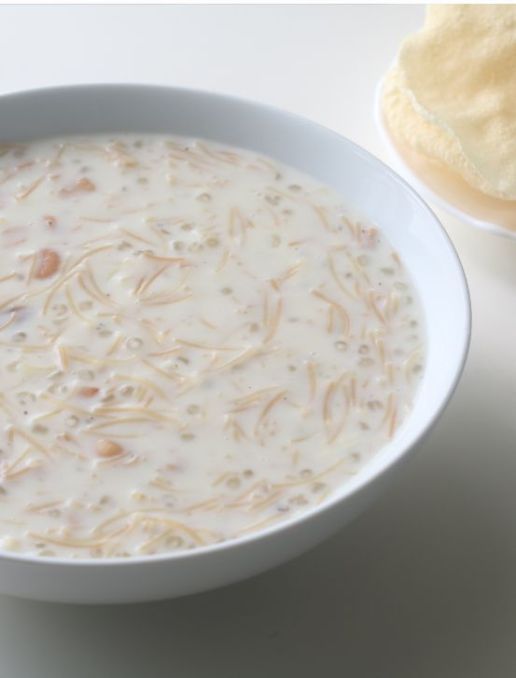
Step-By-Step Instructions:
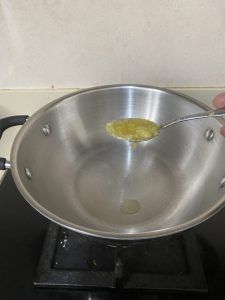
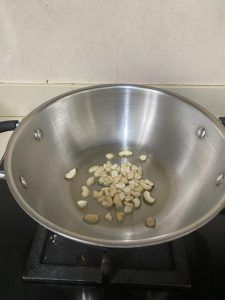
Heat a pan with 2 tsp of ghee over low heat. When the ghee melts, add chopped
cashews and fry until browned.
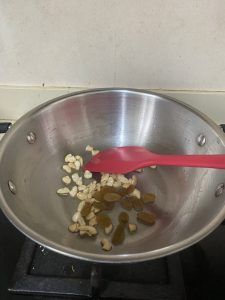
Then add raisins and stir fry until they puffed.
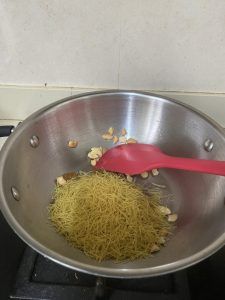
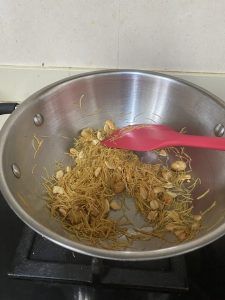
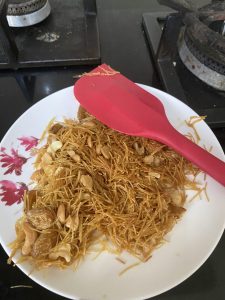
Further, add vermicelli and fry until they become golden brown.
Remove them from the heat.
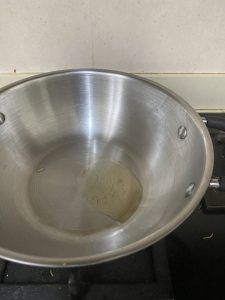
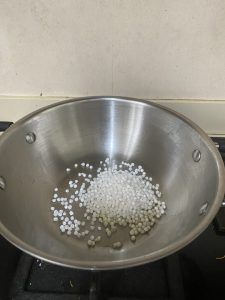
In the same pan add the remaining 1 tsp ghee and then add sago and stir fry until puffed.
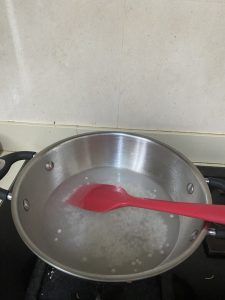
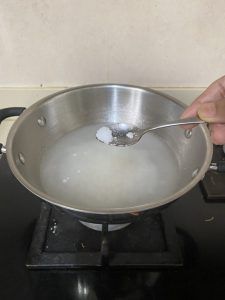
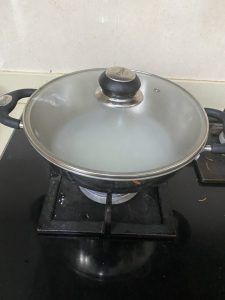
Now pour 1&1/2 cups of water and a pinch of salt, mix well, cover and
cook until 60 to 70%.
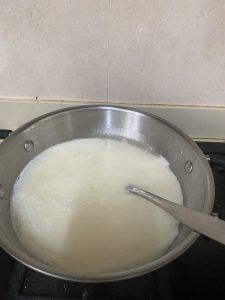
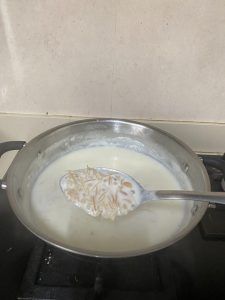
Then add milk and cook until fully cooked. It takes 5 to 6 mins.
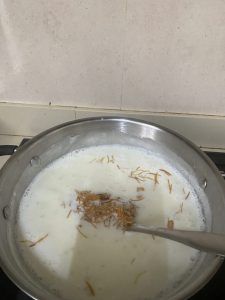
Now add roasted vermicelli with cashews and raisins and cook until fully cooked.
It takes 4 to 5 mins.
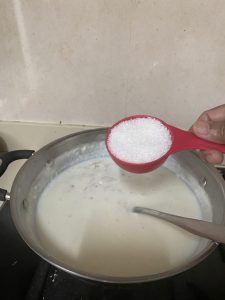
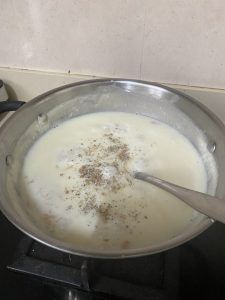
Then add sugar and cardamom powder mix well and cook for one more minute.
Now switch off the heat and serve with appalam.

